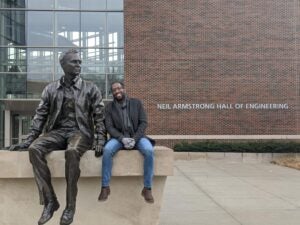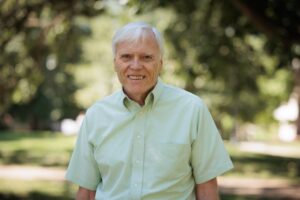The Advanced Research Initiative (ARI) of the Department of Mathematics & Physics and College of Science invites distinguished researchers to Marshall University to speak with both general and specialized audiences and interact with graduate and undergraduate students.
Spring 2025 – ARI Mathematics Speaker
Dr. Martin Bohner
Professor of Mathematics
Missouri University of Science & Technology
January 23 – 24, 2025
“Time Scales”
Thursday, January 23, 2025 • Smith 621 • 1:00pm • PDF
Time scales have been introduced in order to unify continuous and discrete analysis and in order to extend those theories to cases “in between”.
We will offer a brief introduction into the calculus involved, including the so-called delta derivative of a function on a time scale. This delta
derivative is equal to the usual derivative if the time scale is the set of all real numbers, and it is equal to the usual forward difference operator if
the time scale is the set of all integers. However, in general, a time scale may be any closed subset of the reals. We present some basic facts concerning dynamic equations on time scales (those are differential and difference equations, resp., in the above two mentioned cases) and initial value problems involving them. We introduce the exponential function on a general time scale and use it to solve initial value problems involving first-order linear dynamic equation. We also present a unification of the Laplace and Z-transform, which serves
to solve any higher-order linear dynamic equations with constant coefficients. Throughout, we discuss some recent developments and applications of time scales theory to biology, economics, and finance.
“The Beverton-Holt Equation”
Friday, January 24, 2025 • Smith 518 • 1:00pm • PDF
In this talk, we will present the Beverton–Holt equation as used in fisheries and other population models, in many different scenarios (discrete case, continuous case, time scales case, quantum case, periodic case, with and without harvesting etc.).
Fall 2024 – ARI Mathematics Speaker
“A brief tour of spectral graph theory”
Monday, November 4, 2024 • Smith 154 • 1:00pm • PDF
Abstract: Spectral graph theory is the study of eigenvalues of graphs and their connections to the combinatorial properties of the graphs. In this talk, I will present some of my favorite results in spectral graphs involving graph decomposition and addressing, strongly regular graphs, expanders and spectral characterization of graphs. The talk should be accessible to a broad audience and I will present several open problems.
“Optimal distortion embeddings of graphs into Euclidean spaces”
Tuesday, November 5, 2024 • Smith Hall 516 • 1:00pm • PDF
Abstract: Embedding graphs into Euclidean spaces with least distortion is a topic well-studied in mathematics and computer science. Informally, this problem deals with representing a graph by points in an Euclidean space such that the distances between the vertices of the graph are not too “distorted” (“expanded” or “contracted”, I will explain this formally in the talk) from the distances between their corresponding points in the Euclidean space.
Despite a lot of research, there are just a few graphs for which the precise least distortion and a least distortion embedding is known. In 2008, Vallentin studied this problem for distance-regular graphs and obtained a lower bound for the least distortion of a distance-regular graph. In addition, he showed that this bound is tight for Hamming and Johnson graphs as well as strongly regular graphs and conjectured that his bound is always tight for distance-regular graphs. In this talk, I will describe our current progress on this problem This is joint work with Himanshu Gupta (University of Delaware) and Ferdinand Ihringer (Ghent University, Belgium) and Hirotake Kurihara (Yamaguchi University, Japan).
Fall 2023 – ARI Mathematics Speaker
“Inverse Problems: Theory and Practice”
Thursday, November 9, 2023 • Smith 154 • 4:00pm • PDF
In this talk, we will discuss the concept of an inverse problem and its applications. In particular, we will focus on inverse problems arising from partial differential equations.
These problems are to determine information about the mathematical model provided that one has measured values of the solution. The applications span the areas of medical imaging, non destructive testing, cosmology, and geophysics. We will discuss how one can solve inverse shape problems using qualitative (i.e. non-iterative) methods. These methods require little a priori information and are computationally simple to implement when one collects enough data.
“Transmission Eigenvalue Problems for a Scatterer with a Conductive Boundary”
Friday, November 10, 2023 • Smith Hall 518 • 4:00pm • PDF
Abstract: In this talk, we will investigate the acoustic transmission eigenvalue problem associated with an inhomogeneous media with a conductive boundary. These are a new class of eigenvalue problems that are not elliptic, not self-adjoint, and non-linear, which gives the possibility of complex eigenvalues. The talk will consider the case of an Isotropic and Anisotropic scatterer. We will discuss the existence of the eigenvalues as well as their dependence on the material parameters. Because this is a non-standard eigenvalue problem, a discussion of the numerical calculations will also be highlighted. This is joint work with: O. Bondarenko, V. Hughes, A. Kleefeld, and J. Sun.
Fall 2022 – ARI Mathematics Speaker
“In Search of Infinity”
Monday, October 24, 2022 • Science 376 • 4:00pm • PDF
Abstract: “ The infinite! No other question” declared David Hilbert “ has ever moved so profoundly
the spirit of man.” Without assuming any specialized knowledge of the audience, it is my
goal to lay the foundation for a deeper understanding of Hilbert’s remark by engaging in a
conversation around some of the paradoxes associated with the concept of infinity. The most
famous are perhaps Zeno’s paradoxes of motion, and they are still being debated today. On
the other hand, one of the works in the Aristotelian corpus, known as Mechanica, contains a
problem which attracted wide attention at an earlier time, but is now hardly mentioned.
That is the problem of Aristotle’s Wheel, which is exemplified in something as ordinary
as a common rolling pin. Nevertheless, more than two millennia after its inception the
problem surrounding the Wheel played a central role in Galileo’s greatest work: Dialogues
Concerning Two New Sciences, published in 1638. The occasion in the Dialogues prompting
a discussion of the Wheel is a question as important as the ultimate constitution of matter.
After examining a few seemingly paradoxical ideas, and noting their impact in the long
history of thought, I hope that by evening’s end you can with William Blake begin
to see a World in a Grain of Sand
and a Heaven in a Wild Flower,
Hold Infinity in the Palm of your Hand
and Eternity in an Hour.
“The Property of Unique Continuation in Certain Spaces Spanned by Rational Functions on Compact Nowhere Dense Sets”
Tuesday, October 25, 2022 • Smith Hall 511 • 4:00pm • PDF Flyer
Abstract: It has been known for over a century that certain large classes of functions defined on a
compact nowhere dense subset X of the complex plane, and obtained as limits of analytic
functions in various metrics, can sometimes inherit the property of unique continuation
characteristic of the approximating family. The first example of the transfer of the uniqueness
property in this way to R(X), the space of functions that can be uniformly approximated
on X by a sequence of rational functions whose poles lie outside of X, was obtained by M.
V. Keldysh around 1940, but apparently never published. Years later in 1975 A. A. Gonchar
exhibited a qualitatively definitive improvement of Keldysh’s example. My goal here is to
present a survey of the early results on the uniqueness question, beginning with its origin at
Emile Borel’s thesis defense of 1894, concluding with a brief summary of its impact on the
general theory of approximation by analytic functions.
Spring 2020 – ARI Mathematics Speaker
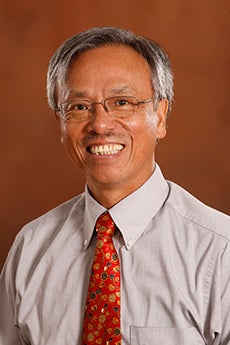
Department of Mathematics
Central Michigan University
March 2 & 3, 2020
“An Overview of Big Data and Data Science”
Monday, March 2, 2020 • Corbly Hall 117 • 4:00pm • PDF Flyer
Abstract: During the recent years, the term “Data Science” has become a magic term for companies trying to find insights from a vast amount of data in the modern competitive business. The term was first referenced in the Proceedings of 5th Conference of the International Federation of Classification Society in 1996. However, the core idea of data science was promoted by Tukey in early 1970’s, when he attempted to distinguish between theoretical vs. empirical evidence. The journey of data science as an area of study is evolving and growing due to the advancement of technology and the rapid growth of data in volume, variety and velocity. Although data science has become extremely popular, the definition of data science as a discipline is different for researchers in different disciplines. In this presentation, I will first briefly present the history of data science and Big Data, present some unique features of data science and discuss strategy for initiating and conducting a “data science” project, and present some examples of data science projects.
“A framework for developing generalized asymmetric distributions and regression models “
Tuesday, March 3, 2020 • Smith Hall 514 • 4:00pm • PDF Flyer
Abstract: During the recent decade, there have been an active research in developing new and more flexible statistical distributions with more parameters for the purpose of fitting more complicated real world phenomena. A huge number of new distributions were developed using the T-R{Y} framework. One critical criticism is that many of these new distributions with many parameters may not be practically useful. Although they can fit broader types of data, these parameters often do not have meaningful interpretations. Practically useful distributions often have three parameters (location, scale and shape parameters). However, such three-parameter distributions often are limited to fit a wide range of skewed data. In this talk, a brief review of methods for developing three-parameter asymmetric distributions will be reviewed. A framework will be proposed to derive three-parameter generalized asymmetric distributions that are capable of fitting a wide range of skewed (left and right) data. Some special cases will be discussed and compared with other more complex distributions. Generalized regression models with response following generalized asymmetric distributions will be discussed. A generalized asymmetric logistic regression model will be presented and applied to model finance and failure time data.
Fall 2019 – ARI Mathematics Speaker
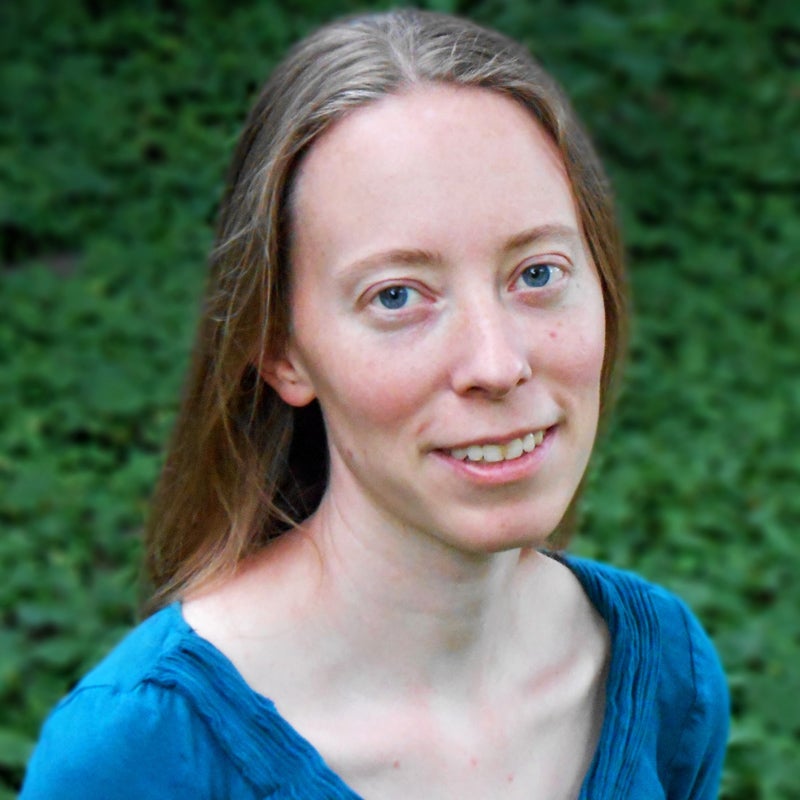
Mathematics Department
Lehigh University
November 6 & 7, 2019
“Macdonald Polynomials: thinking abstractly”
Wednesday, November 6, 2019 • Corbly Hall 104 • 4:00pm • PDF Flyer
Abstract: The Macdonald polynomials are a beautiful example the advantages and disadvantages of abstract mathematics. This basis for symmetric polynomials was first defined indirectly, making them difficult to compute or use for calculations. At the same time, once constructed, the Macdonald polynomials encode a wealth of disparate information, from the number of ways to place n books on a shelf, to interactions between n particles, to efficient ways to compute matrix statistics regularly used for wireless communications. We’ll discuss why Macdonald polynomials are useful, what they “look” like, and what we do and don’t know about how to compute with them.
“Applying Representation Theory to Random Walks”
Thursday, November 7, 2019 • Smith Hall 530 • 4:00pm • PDF Flyer
Abstract: We’ll talk about why representation theory is useful, by focusing on a particular case: using representation theory to analyze random walks on groups. We’ll also discuss some of the difficulties in this approach, here focusing on joint work with Daniel Bump, Persi Diaconis, Laurent Miclo, and Harold Widom studying a simple random walk on the the Heisenberg group mod p (a particularly simple to describe noncommutative group). Analysis of a random walk on the group dates back to Zach, who was considering the effectiveness of certain random number generators. We’ll assume knowledge of matrices and basic linear algebra, but otherwise aim for an elementary talk.
Spring 2019 – ARI Mathematics Speaker
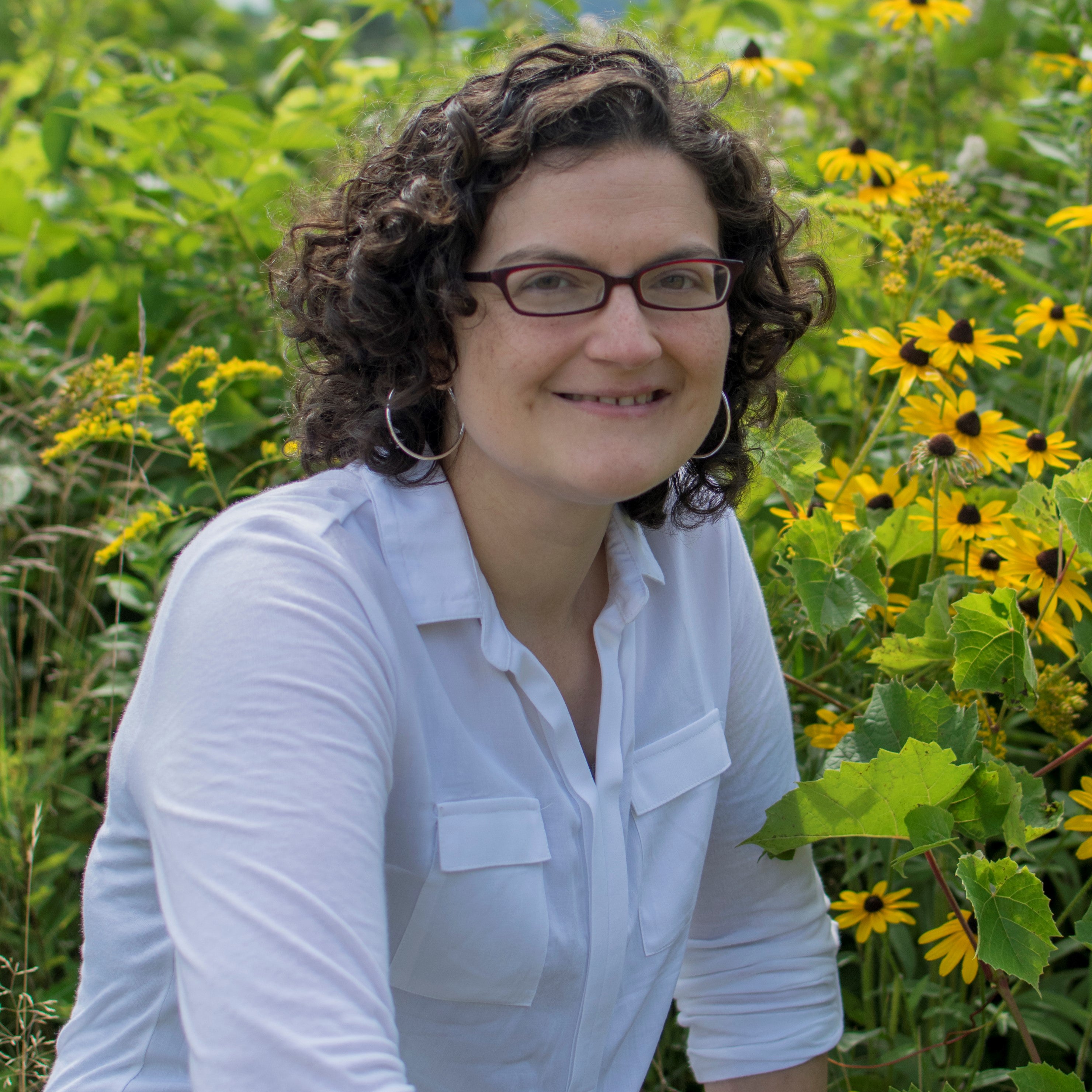
Department of Digital and Computational Studies
Bates College
February 18 & 19, 2019
“Zombifying Mathematics and Humanizing Mathematics”
Monday, February 18, 2019 • Corbly Hall 105 • 4:00pm • PDF Flyer
Abstract: In this talk, I will discuss work intended to engage a broader mathematics audiences. In the first talk, I examine the role of experiential engagement in mathematics. Instead of modeling zombies in pop culture, what happens when the zombies invade campus? In the second half of the talk, I pivot to what it means to humanize mathematics, through a narrative project called “math mamas”. I introduce ethnography and duoethography as ways to explore identity and reclaim narratives about who is doing mathematics.
“Networks: Ecology, Facebook, and Interdisciplinary Teaching”
Tuesday, February 19, 2019 • Smith Hall 529 • 4:00pm • PDF Flyer
Abstract: Plants and pollinators share something interesting with websites and users — they can both be described as a bipartite, mutualistic network. I discuss how the way these networks form and evolve over time, and how that gives us insight into the structure we see, and the management decisions that we make. I also consider how we could use this understanding to advance interdisciplinary education research.
Fall 2018 – ARI Mathematics Speaker
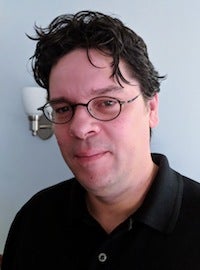
Department of Mathematics
University of Vermont
October 29 & 30, 2018
“Measuring Similarity with Games”
Monday, October 29, 2018 • Corbly Hall 105 • 4:00pm • PDF Flyer
Abstract: How similar are the Lithuanian and Bulgarian flags? Is the Bulgarian more or less similar to the Hungarian flag? What about the Russian and Austrian and Dutch flags? Is there an objective way to measure the similarity between these patterns?
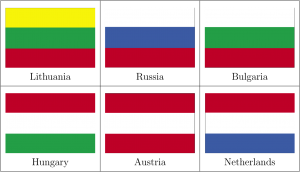
We will talk about a way of measuring similarity using Ehrenfeucht–Fraïssé (EF) games, which have been used in logic and model theory to distinguish mathematical theories and their associated structures. We will see how EF games can be used to measure the similarity between two flags as well as more practical everyday patterns like bar codes.
This research is joint work with a wonderful team of undergraduate students spanning over a decade: Steve Gubkin, Tom Kern, Alice Kittredge, Daniel McDonald, Patrick Mullins, Sam Pettorini, Manuel Rivera, Mike Solomon, and Chrissy Zlogar.
“Formal Methods in Undergraduate Mathematics”
Tuesday, October 30, 2018 • Smith Hall 516 • 3:30pm • PDF Flyer
Abstract: Recent years have seen major developments in computer assisted formal methods in mathematics. Proof assistants such as Agda, Coq, Isabelle, Lean, HOL Light, Mizar are becoming more and more accessible for everyday use, even by mathematicians with little to no computer science background. These advances are opening new doors for integrating such tools in mathematics research as well as mathematics education.
I will discuss an ongoing project where a team of mathematics students at the University of Vermont are building a library of theorems from their mathematics courses for the Lean proof assistant. After just a few months of work, our team has already formalized more than half of a standard course in linear algebra. Through demonstration, we will see how theorem proving in Lean works and what kind of work is involved in such a project. Time permitting, I will also discuss ideas on integrating proof assistants in the classroom.
This research is joint work with Vanessa Myhaver, Anne Marie Stupinski, and Helene Thomas.
Fall 2017 – ARI Mathematics Speaker
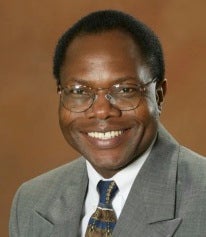
Professor of Mathematics
Central Michigan University
“Global Warming and Statistical Application”
Wednesday, November 1, 2017 • Smith Hall 154 • 4:00pm • PDF Flyer
Abstract: A majority of scientists and others now agree that the earth’s climate is warming, as indicated by a rise in the average surface temperature of the earth. One of the assessment reports of the Intergovernmental Panel on Climate Change defines climate change as a change in the state of the climate that can be identified through statistical tests. This talk will outline some of the causes of global warming, effects of climate change and combating the effects of global warming. Application of statistics to global warming will be mentioned.
“Recent developments in statistical distributions”
Thursday, November 2, 2017 • Smith Hall 530 • 4:00pm • PDF Flyer
Abstract: This talk will cover how the β-generated family of distributions evolved into the T-R{Y} framework. A new method is proposed for generating discrete distributions. A special class is the generalized geometric family of distributions that contains the discrete analogues of continuous distributions. A member of the family, the exponentiated exponential-geometric distribution is defined and studied. A regression model, based on the distribution, is defined. If time permits, the usefulness of the regression model is illustrated with an application.
Spring 2017 – ARI Mathematics Speaker
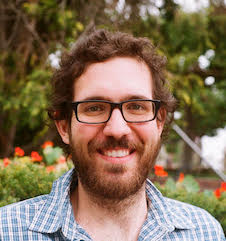
Assistant Professor of Mathematics
University of Connecticut
“Problems, Problems, Problems”
Monday, April 10, 2016 • Corbly Hall 105 • 4:00pm • PDF Flyer
Here is a problem just about everyone has seen in a math class at some point: Given a function, find its range. For example, if we are given the function f (x) = x 2, defined for x = 0, 1, 2, 3, 4, …, we know that its range is 02 = 0, 12 = 1, 22 = 4, 32 = 9, 42 = 16, etc. Easy enough, it seems. Here is another problem just about everyone has faced: Your computer is showing you the dreaded spinning beach ball, and you forgot to save the document you have been working on—do you try to wait it out, or reboot now and start over? That seems like a much harder task… But surprisingly, these two problems—the range problem, and the spinning beach ball problem—are actually one and the same, in a certain precise sense. I will explain why this is the case, and mention other related problems, some more familiar than others. Some of the key insights here go back to Turing, and the advent of modern computing, which I will discuss along the way.
“Mathematics, Backwards and Forwards”
Tuesday, April 11, 2016 • Smith Hall 530 • 4:00pm • PDF Flyer
Abstract: Mathematics today benefits from having “firm foundations”, by which we usually mean a system of axioms sufficient to prove the theorems we care about. But given a particular theorem, can we specify precisely which axioms are needed to derive it? This is a natural question, and also an ancient one: over 2000 years ago, the Greek mathematicians were asking it about Euclid’s geometry. Reverse mathematics is a program in mathematical logic that provides a modern approach to this kind of question. A striking fact repeatedly demonstrated in this research is that the vast majority of mathematical propositions can be classified into just five main types, according to which axioms are needed to carry out their proofs. I will discuss these five categories, and what they reveal about relationships between different areas of mathematics. I will also mention a few notable examples of theorems that do not fit inside these five categories.
Fall 2016 – ARI Mathematics Speaker
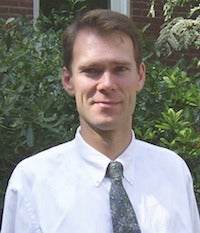
Professor of Mathematics
University of Kentucky
“Mathematical Magic”
Monday, October 10, 2016 • Corbly Hall 104 • 4:00pm • PDF Flyer
We will demonstrate a few “magic” tricks, all based upon mathematics. We will reveal the tricks including the mathematics behind them. Among other topics this will include parity, recursions and Hall’s Marriage Theorem.
“Counting Permutations with Calculus”
Tuesday, October 11, 2016 • Smith Hall 516 • 4:00pm • PDF Flyer
A permutation π = π1 π2 … πn is a list of the elements 1 through n in some order. A permutation is alternating if the elements zig-zag, that is, π1< π2 > π3 < … . We prove a classic formula for the number of alternating permutations using the interplay of geometry and calculus. Using the same techniques we also study the number permutations with no double ascents, that is, there is no index i such that πi < πi+1 < πi+2. Unfortunately, this last case becomes messy and leads to open questions where else these techniques can be applied.
Spring 2016 – ARI Mathematics Speaker
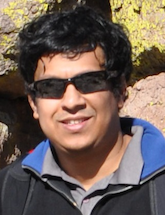
Research Assistant Professor of Mathematics
Division of General Internal Medicine,
Department of Medicine, University of Washington
“Introduction to Genetic Epidemiology in GWAS era”
Monday, March 7, 2016 • Science Building 376 • 4:00pm • PDF Flyer
Genetic epidemiology holds great potential for personalized medicine and improved biological knowledge of disease pathogenesis. In this talk, I will introduce some basic concepts needed to understand, analyze, and interpret Genome-wide Association Studies (GWAS) data with late-onset Alzheimer’s disease (LOAD) as an example. I will briefly talk about extending these results to gene-wide and network/pathway-based analysis, which are complementary to GWASs.
“Genetic analyses of late-onset Alzheimer’s Disease”
Tuesday, March 8, 2016 • Smith Hall 529 • 4:00pm • PDF Flyer
Alzheimer’s disease is the most common form of dementia. Genetics of late-onset Alzheimer’s disease (LOAD) is very complex. Genome-wide Association Studies (GWAS) are an important first step. Gene-based and network/pathways based analyses also contribute to the understanding of genetic determinants of LOAD. Thus, a three-component approach — GWAS, gene-based, and network-based analyses — is likely to best illuminate genetic determinants of a disease. I will explore the three component approach in this talk.
Fall 2015 – ARI Mathematics Speaker
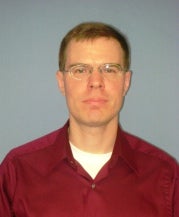
Associate Professor of Mathematics
Virginia Tech
“Rook Theory 101”
Monday, September 28, 2015 • Location TBA • 4:00pm • PDF Flyer
Combinatorics is the mathematical theory of counting. In this talk, we introduce combinatorics through the subject of rook theory — which has nothing to do with chess! The first goal of rook theory is to count configurations of rooks on generalized chessboards so that no two rooks attack each other. The k’th rook number of a board counts the number of such ways to place k rooks on the board. It often happens that two different boards share the same rook numbers. This talk investigates when and why this occurs by using geometric and algebraic manipulations of boards and rook placements. We present theorems of Foata/Schutzenberger and Goldman/Joichi/White characterizing rook-equivalent boards in various ways. The techniques used illustrate three branches of modern combinatorics — enumerative combinatorics, bijective combinatorics, and algebraic combinatorics. No prior knowledge of counting (or chess) is required for this talk.
“Sweep Maps and Bounce paths”
Tuesday, September 29, 2015 • Location TBA • 4:00pm • PDF Flyer
Mathematics is filled with open (unsolved) problems, ranging from deep foundational issues of physics, computation, geometry, and number theory to highly specialized research questions. This talk describes an open problem in algebraic combinatorics that can be stated and investigated with virtually no mathematical background, although the problem appears to be fiendishly challenging to solve. We define a family of maps on words, called “sweep maps.” A sweep map assigns a level to each letter in a word according to a simple rule, then sorts the letters according to their level. Surprisingly, although sweep maps act by sorting, they appear to be invertible: i.e., different input words are always sent to different output words by any given sweep map. The open problem is to prove the invertibility of all sweep maps, preferably by explicitly describing the inverse functions. We explain some known special cases of this problem using a model in which words are visualized using lattice paths. In some cases, we can pass from a lattice path to an associated “bounce path,” which provides the additional data needed to invert the sweep map. These bounce paths originally arose in the study of objects called q,t-Catalan polynomials. Many algorithms that have appeared in the q,t-Catalan literature over the last 20 years turn out to be particular instances of the sweep maps or their inverses. The sweep maps thus provide a simple unifying framework for understanding all of these algorithms.
Spring 2015 –ARI Mathematics Speaker

Assistant Professor of Mathematics
University of Tennessee
“Modeling the host response to inhalation anthrax to uncover the mechanisms driving risk of disease”
Tuesday, April 14, 2015 • Science Building 276 • 4:00pm • PDF Flyer
Bacillus anthracis, the causative agent of anthrax, can exist in the form of highly robust spores, making it a potential bio-terror threat. Once inhaled, the spores can germinate into vegetative bacteria capable of quick replication, leading to progressive disease and death. There is a critical need to better quantify the risk of disease from different inhalation exposure scenarios. Key to this effort is the use of mathematical and computational modeling to uncover the mechanisms driving risk. To this end, this presentation will discuss ongoing work on the development of models and methods that explore the host response to inhalation anthrax and provide insight into the mechanisms that drive the risk of disease. This is joint work is joint University of Tennessee graduate student Buddhi Pantha, and the NIMBioS Working Group on Modeling Anthrax Exposure.
“Determining the what, when, and how of therapeutic intervention strategies for controlling complex immune responses”
Wednesday, April 15, 2015 • 376 Science Building • 4:00pm • PDF Flyer
Ideally, when challenged with a bacterial insult, a host orchestrates an immune response that, not only eliminates the offending pathogen, but also restores the host to homeostasis. However, due to the complex nature of the response, this is not always possible, especially in critically ill patients. Clearly, intervention is needed; however, determining the types of intervention that should be given, when they should be given, and in what amount remains a challenge. Computational modeling and control methodologies can provide fresh insight into this challenging biomedical problem and potentially offer techniques to answer these difficult questions. This talk will discuss computational control methodologies that are being explored to determine the what, when, and how of therapeutic intervention strategies for controlling complex immune responses.
Fall 2014 – ARI Mathematics Speaker
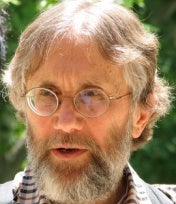
UWF Beckwith Bascom Professor of Mathematics (Emeritus)
University of Wisconsin – Madison
“The Gale-Berlekamp Light-Switching Problem and a Permutation Variation”
Wednesday, November 5, 2014 • Smith Hall 154 • 4:00pm • PDF Flyer
Consider an n by n array of light bulbs each controlled by a switch. Suppose there are also 2n other switches which allow one to simultaneously switch all the light bulbs in a row or all the light bulbs in a column. Now use the individual switches and turn some of the light bulbs on. With the row and column switches only, can one get all the lights in the off position? If not, how few on-lights are possible? This problem, its connections to coding theory, and a permutation variation is the subject of this talk.
“All Things Bruhat: Matrix Bruhat Decomposition,Complete Flags, Bruhat Order of Permutations, (0,1) and Integral Matrices, and Tournaments”
Thursday, November 6, 2014 • Science Building 375 • 4:00pm • PDF Flyer
The title is a bit of an exaggeration, but we will discuss the topics it contains and various connections between them.
Spring 2014 – ARI Mathematics Speaker
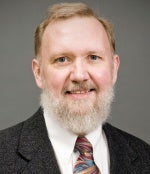
Professor of Mathematics
Appalachian State University
“Alan and Ada’s Theoretical Machines”
Monday, March 10, 2014 • Shawkey Room, MSC • 4:00pm • PDF Flyer
Ada Lovelace is often called “the first computer programmer,” though she died a century before the first general purpose computers were built. This claim is based on the notes she appended to her translation of Menabrea’s 1842 paper, Notions sur la Machine Analytique de M. Charles Babbage. Alan Turing is often called “the father of theoretical computer science” on the basis of his 1936 article On computable numbers, with an application to the Entscheidungsproblem. Lovelace’s notes describe Babbage’s Difference Engine and Babbage’s Analytical Engine, and Turing’s paper proves the existence of a Universal Turing Machine. This talk will compare the designs and capabilities of these early theoretical computing machines.
“Reverse Mathematics, Graphs, and Matchings”
Tuesday, March 11, 2014 • Science 465 • 4:00pm • PDF Flyer
How can we tell if two theorems are essentially the same? If we can prove that they are equivalent, then they are in some sense interchangeable. If our equivalence proof relies on a particularly small set of assumptions, then our claim of similarity is even stronger. This is the fundamental motivation of reverse mathematics, a program in the foundations of mathematics initiated by Harvey Friedman and Stephen Simpson. This talk will illustrate some results and techniques of the program.
Fall 2013 – ARI Mathematics Speaker
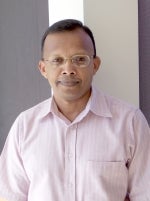
Presidential Research Professor
University of Maryland, Baltimore County
“The Assessment of Bioequivalence: A Statistical Overview”
Monday, November 18, 2013 • MSC BE5 • 4:00pm • PDF Flyer
The topic of bioequivalence deals with procedures for testing the equivalence of two drug products: typically, a generic drug and a brand name drug on the market. Bioequivalence testing consists of showing that the concentration of the active drug ingredient that enters the blood is similar for the two drugs. Area under the time-concentration curve, or the AUC, is usually used for this purpose, and the data are obtained based on cross-over designs. In the talk, the bioequivalence problem will be introduced, its history will be discussed, and examples will be provided. Statistical criteria that are used for bioequivalence testing, especially the criterion of average bioequivalence, will be discussed. Methodology for testing the hypotheses of average bioequivalence will be addressed. The emerging area of equivalence testing in the context of biosimilars will be briefly touched upon.
“Methodology and Some Applications”
Tuesday, November 19, 2013 • CH 105 • 4:00pm • PDF Flyer
Standard likelihood based methods that are usually used to analyze data arising from a parametric model are typically accurate to the first order. Higher order inference procedures provide major improvements in accuracy, and are available for discrete as well as for continuous data. In the talk, two applications of higher order inference will be described. Both the applications deal with the computation of an upper tolerance limit: a limit that is expected to capture a specified proportion or more of a population with a given confidence level. The limit is constructed using a random sample, and the confidence level refers to the resulting sampling variability.
The first application that will be discussed is on the computation of tolerance limits under the logistic regression model for binary data. The data consist of binary responses, and upper tolerance limits are to be constructed for the number of positive responses in future trials corresponding to a fixed level of the covariates. The problem has been motivated by an application of interest to the U.S. Army, dealing with the testing of ballistic armor plates for protecting soldiers from projectiles and shrapnel, where the probability of penetration of the armor plate depends on covariates such as the projectile velocity, size of the armor plate, etc. The second application is on the computation of upper tolerance limits under a general mixed effects model with balanced or unbalanced data. Higher order inference procedures will be used to obtain accurate solutions in both the applications. Numerical results, examples and data analysis will also be reported.
Spring 2013 – ARI Mathematics Speaker
Professor of Mathematics
Georgia Institute of Technology
“Sir Ronald Ross, the SIR transmission model and the Foundations of Public Health”
Wednesday, March 6, 2013 • Drinko 402 • 4:00pm
After some brief comments about the nature of mathematical modeling in biology and medicine, we will formulate and analyze Sir Ronald Ross’s SIR infectious disease transmission model. The model is a system of three non-linear differential equations that does not admit a formula solution. However, we can apply methods of calculus to understand a great deal about the nature of solutions. Along the way we will use this model to develop a theoretical foundation for public health, and we will observe how the model yields several fundamental insights (e.g., threshold for infection, herd immunity, etc.) that could not be obtained any other way. At the end of the talk we will compare the model predictions with data from actual outbreaks.
“Perspectives on multiple waves during flu pandemics”
Thursday, March 7, 2013 • SH 511 • 4:00pm
A striking characteristic of the past four influenza pandemic outbreaks in the United States has been the multiple waves (peaks) of infections. However, the mechanisms responsible for the multiple waves are uncertain. We use mathematical models to exhibit mechanisms each of which can generate multiple waves.
The first two mechanisms capture changes in virus transmissibility and behavioral changes. The third mechanism involves population heterogeneity (e.g., demography, geography, etc.); each wave spreads through one sub-population. The fourth mechanism is virus mutation which causes delayed susceptibility of individuals. The fifth mechanism is waning immunity. Four of the models reproduce the two waves of the 2009 H1N1 pandemic in the United States, both qualitatively and quantitatively. One model reproduces the two waves only qualitatively.
We use the models to study the effects of border control and vaccination strategies on the outbreak, and we propose a hypothesis about why China only experienced a single wave of infections during the 2009 flu pandemic.


